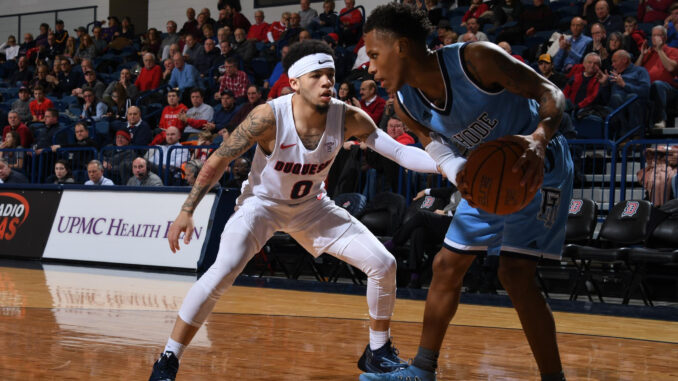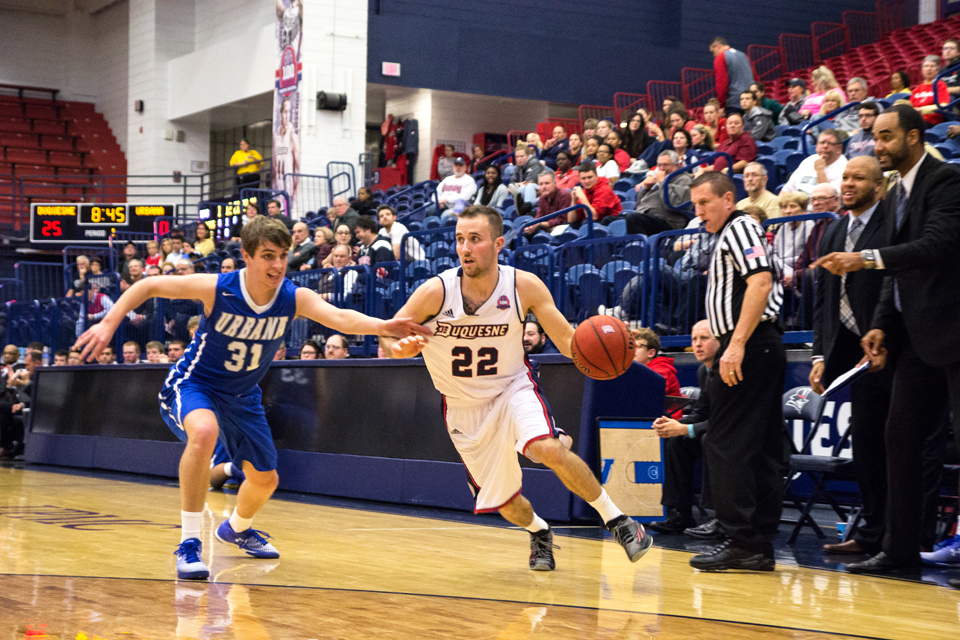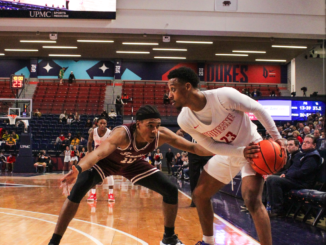
Jacob Hebda | Staff Writer
Nov. 19, 2020
1977. That’s the last time Duquesne appeared in the NCAA Tournament.
Most programs catch a break somewhere along the road. Sometimes a standout player, precocious coach or practical miracle carries a team to the tourney.
Duquesne has not been among that fortunate class.
The Dukes have whiffed 43 years in a row, good for the sixth-longest ongoing streak in the country. That span has included 29 losing seasons.
That’s what makes Keith Dambrot’s tenure thus far so impressive. In three seasons, the Dukes’ head coach holds a record of 56-38. That’s a .595 average.
Excluding Dambrot, Duquesne has had four coaches since 1998.
Their winning percentages over their first three seasons? .264, .344, .516 and .363. Go another 20 years back in history, and the numbers are much the same.
It’s still early in the Dambrot era, but his record represents a remarkable turnaround already.
The first game I ever covered for The Duke was in February 2018, Dambrot’s inaugural season, when St. Bonaventure came to town.
A.J. Palumbo Center had its biggest attendance in years. The crowd, outfitted almost exclusively in red attire, was raucous.
Duquesne fell on the final possession that night, then proceeded to lose its next five games.
On that night though, you couldn’t help but smile. There was genuine optimism for the future, and so far, those feelings have been vindicated.
Dambrot continues to grow this program. His transfers comprise the heart of this team. His recruiting classes have been deep and productive. Each season has been an improvement from the prior one.
Now, Duquesne may experience postseason basketball as early as this season.
The Dukes should be among the contenders for an Atlantic 10 title. They have a legitimate shot at the NCAA Tournament.
This is the most complete team Dambrot has had. Coming off a 21-9 season, this roster returns nearly all of its contributors. Baylee Steele is the only player who averaged 20 minutes per game last year that will not be returning.
The backcourt, consisting of Sincere Carry, Tavian Dunn-Martin, Maceo Austin and Lamar Norman Jr. is skilled and experienced.
Carry is arguably the team’s best player. Dunn-Martin tends to get hot when it matters most.
Norman, already a proven shooter, still has room to grow. Austin, a highly-touted recruit, will be looking to build on a solid first season.
The frontcourt of Marcus Weathers and Mike Hughes is back. Weathers was one of the A-10’s breakout stars last season, earning second team all-conference honors. In addition to averaging 10 points and seven rebounds per game, Hughes ranked near the top of the NCAA in blocks.
One of the biggest weaknesses for Dambrot’s teams has been the small forward position. Former Duke Eric Williams Jr. was a terrific fit on the court, but his departure for Oregon in 2019 left Duquesne in need of a dynamic scorer.
That’s what makes this year’s freshmen so intriguing. The Dukes will add Toby Okani, Andre Harris and Chad Baker, each of whom are 6-foot-7. At 6-foot-4, fellow newcomer Tyson Acuff brings size to the backcourt as well.
That group very well may contain the missing piece for this roster.
Much remains to be seen, including how an inevitably tumultuous season will unfold. But take a look at the talent and depth of this team, and it’s reasonable to think this program will only improve.
The building Dambrot has done is admirable. He arrived with a vision, stuck to it, and continues to change this program for the better.
So here we are. In the midst of a year that made even the most hopeful individuals pessimistic, Duquesne offers a glimmer of hope.
Will they finally break that streak? Hopefully, but who knows?
All I know is that whatever happens, you can’t count out Duquesne anymore.




